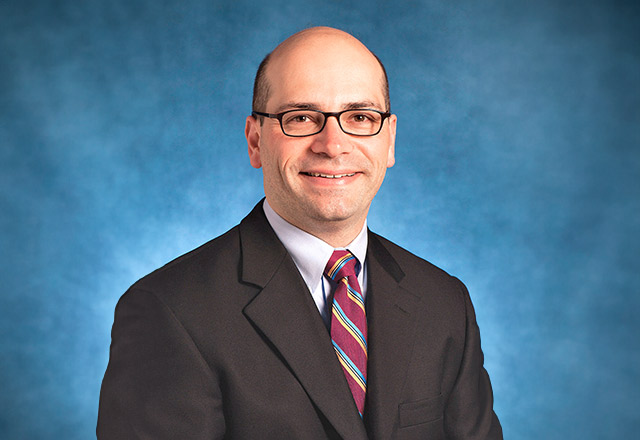Immunotherapy | A Game Changer
A Game Changer

John Hersey c/o TheiSpot
 PARDOLL
PARDOLLTherapies that empower the body’s own natural defenses became a reality in the mid 2010s, providing unparalleled, long-lasting responses across many cancer types, and even in the most advanced and treatment-resistant cancers.
These discoveries led to the launching of the Bloomberg~Kimmel Institute for Cancer Immunotherapy in 2016, started with lead gifts of $50 million each from Michael Bloomberg and Sidney Kimmel.
As long as cancer has been a recognized disease, doctors have believed the power to eliminate it existed within the immune system.
 JAFFEE
JAFFEEImmune-based therapies reflect a different approach to treatment. Instead of targeting cancer cells, the new therapies target immune cells in and around cancers. Some treatments increase the number of immune cells summoned to the tumor, and others unleash the commands that send the immune cells to work against the cancer. These types of immune therapies have had success alone, but perhaps their greatest power is coming in combining them and, through precision medicine, using the biological clues within each patient’s cancer to guide treatment.
 LEVITSKY
LEVITSKYA Vaccine
Drew Pardoll, M.D., Ph.D., Elizabeth Jaffee, M.D., and former faculty member Hyam Levitsky, M.D., began in the 1980s deciphering the mechanisms of the immune system, how it works and why it all too often does not work against cancer. As students of the immune system, Pardoll, Jaffee, Levitsky, and collaborators understood that it should be the perfect anticancer weapon, but if the cancer cell was complex in its molecular construction, the intricacies of the immune system were equally complicated.

One of the first immunotherapies developed at the Kimmel Cancer Center was a therapeutic cancer vaccine called GVAX. The novel vaccine supercharged immune cells, which tend to be tolerant of cancer, to seek out and destroy cancer cells throughout the body.
Pardoll, Kimmel Cancer Center Director William Nelson, M.D., Ph.D., and former faculty member Jonathan Simons, M.D., first tested GVAX in kidney cancer.
 SIMONS
SIMONSIt’s greatest success, however, came in pancreatic cancer, leading to several long-term survivors (see story on page #) of this often lethal diagnosis. Jaffee, who led the pancreatic cancer studies, even opened a GMP (Good Manufacturing Practice) facility at the Kimmel Cancer Center to make the vaccine.
Jaffee continues to work with you faculty members to develop and study better iterations of the vaccine, adding gene mutation-directed components, combining the vaccine with other immunotherapies, and using modified bacteria to augment the immune response.
Immune therapy is a game changer...we don't think there is a single cancer that the patient's own immue system ultimately can't beat."
Drew Pardoll
More Power
Researchers believed there was still much more power in the immune response that remained untapped and could be used against cancer.
Unlike viruses and bacteria that are easily recognized by the immune system because they are so different, cancer originates from the body’s own cells. As a result, it has all of the cellular mechanisms that are used by normal cells at its disposal.
Center team of multispecialty collaborators--seasoned investigators and young clinician-scientists--figured out how to reset the cellular controls highjacked by the cancer cell and restore power to the immune system.
Cancer co-opts them selectively, using them like superpowers to grow, spread, and cloak themselves from the immune system. It took time for the technology to catch up with the scientific ideas. A Kimmel Cancer Center team of multispecialty collaborators—seasoned investigators and young clinician-scientists— figured out how to reset the cellular controls hijacked by the cancer cell and restore power to the immune system.
As the therapies began to unfold, the results were unparalleled. Some patients who were months, even weeks, from dying survived, some five years and longer, after treatment.
Immune Checkpoint Blockades
 TOPALIAN
TOPALIANIn 2015, Suzanne Topalian, M.D., Associate Director of the Bloomberg~Kimmel Institute for Cancer Immunotherapy, saw more than 8,000 practicing oncologists and clinical cancer scientists from all
over the world fill the lecture hall at the 2015 annual meeting of the American Society of Clinical Oncology (ASCO) to hear her speak.
It was not the first time a standing-room only crowd had come to hear a Kimmel Cancer Center researcher discuss this new type of immune therapy. In 2012, Thoracic Oncology Program Director Julie Brahmer, M.D., presented findings on an immune checkpoint blockade study in lung cancer. It marked a changing tide in clinical cancer research. Immunology studies had never before received this level of attention at ASCO meetings.
 BRAHMER
BRAHMERWith remarkable and lasting results in about 20% to 40% of patients with advanced cancers that resisted all other types of therapy, oncologists wanted to know more. Scholarly journals and the news media alike were reporting on drugs that caused lethal melanoma skin cancers, kidney cancers, and lung cancers to melt away and stay away. The therapies were new, first tested in patients in 2006.
These long-lasting responses that continued even after therapy was stopped and did not cause the side effects of nausea, vomiting, hair loss, and low blood counts, that had become so characteristic of cancer treatment, are the reason the auditorium was filled to capacity. Doctors were anxious to learn how and when they could get this new therapy for their patients.
Checkpoints
 ANDERS
ANDERSThe source of the excitement was an immune target called PD-1. It is what immunology experts call immune checkpoints. The results in laboratory research and these early clinical trials showed it to be one of the strongest influencers of an immune response to cancer identified. It—and other similar proteins—are responsible for cancer’s ability to avert an immune attack.
There are two main actions at play in an immune reaction. The first is a “go” signal. “Our cells are constantly presenting our own proteins to our own immune system,” explains pathologist Bob Anders, M.D., Ph.D.
One can think of DNA as the blueprint of a cell, and the proteins its genes encode are its building blocks. A protein from a mutated gene looks different than its normal counterpart. In the same way it recognizes bacteria and viruses, the patrolling immune system can recognize abnormal cells that don’t belong.
“When immune cells come upon something that shouldn’t be there, they generate an immune reaction,” says Anders. “This is the go signal. When the job is done and the invading cells are taken care of, the immune system issues a “stop” signal.”
These stop signals are controlled by immune checkpoints like PD-1. In cancer, malignant cells hijack the “stop” signal to maintain their own survival. They send a deceptive message to cancer-killing immune cells that there is no problem. Immune cells arrive at the tumor, but they are duped with a false message that everything is OK.
 TAUBE
TAUBE“Essentially, they’re told to go home. There is nothing to see here,” says pathologist Janis Taube, M.D., M.Sc.
Drugs that block PD-1 release these restraints, unharnessing the power of the immune system against the cancer.
The first clinical reports of checkpoint inhibitors in melanoma were exciting and peaked interest, but excitement was tempered because the few successes in immune therapy over the last three decades had also been primarily in melanoma and kidney cancer. There have been documented cases of these cancers occasionally going into spontaneous remission, so experts long maintained that, by nature, these types of cancers had a way of engaging the immune system. No other type of cancer was considered to be responsive to immune interventions, so the new therapy was greeted with guarded optimism.
That all changed in 2012 when the Kimmel Cancer Center group published the results of anti-PD-1 therapy in lung cancer patients. Lung cancer had never before responded to an immune therapy, and the remarkable activity of anti-PD-1 in a small number of lung cancer patients proved what Pardoll and other cancer immunologists long believed—if understood, the immune system could be used to fight any cancer.
“Anti-PD-1 has become a cancer juggernaut,” says Pardoll.
Developed from Scratch
 CHEN
CHENPardoll first became interested in the PD-1 in 2000, when he came upon a partner protein, called PD-L2. Lieping Chen, M.D., Ph.D., a collaborator of Pardoll’s at the Kimmel Cancer Center, and now at Yale, had just discovered PD-L1, a partner protein to PD-1, and showed that it’s expression in human lung cancer cells was highly elevated compared to normal cells. Although lung cancers had not responded to other past immune therapy attempts, this discovery provided new evidence that it had the potential to work and was the reason the Kimmel Cancer Center team included lung cancer patients in the first anti-PD-1 trial.
“We developed this one from scratch at the Kimmel Cancer Center,” says Pardoll.
As soon as the components of the PD-1 pathway were discovered in 2000, Pardoll, Topalian, Brahmer, and immunology and genitourinary cancer expert Chuck Drake, M.D., now at Columbia University, saw the potential of blocking it. They began working to develop the first anti-PD-1 antibody in the laboratory and took it to patients. They too found strong responses in melanoma, but it was Brahmer’s lung cancer patients that were game changers.
 DRAKE
DRAKEIt was the moment Pardoll staked his career on when he left the laboratory of world renowned cancer genetics researcher and pioneer Bert Vogelstein, M.D., in the 1970s to branch out on his own and start his cancer immunology lab.
For Topalian, it felt like redemption. She worked with Steven Rosenberg, M.D., Ph.D., at the National Cancer Institute for 20 years, exploring interferons and interleukins, cellular messengers critical to immune responses. In the 1980s, they had garnered similar excitement as a potential broad-based immune treatment for cancer.
The cover of Time magazine boasted the headline “Interferon: The Cure for Cancer.” When the celebrated treatment failed to live up to expectations—most of which had been generated by an eager news media desperately waiting for the grand-slam victory that had been promised when the “war against cancer” was announced in 1971—the field of cancer immunology was nearly crushed.
Topalian saw it differently, however. It wasn’t the blockbuster immunotherapy people had hoped for, but it was a start.
“It was the first evidence that a drug that acted only through the immune system could fight very advanced cancer,” says Topalian. “That was important because it told us we were on the right track with immunotherapy and needed to keep working on this.”
Unfortunately, others outside the field of cancer immunology had begun to doubt the promise of immune treatments in cancer. Immunotherapy discussions at the large national cancer meetings were sparsely attended, and research funding was hard to come by. In true Kimmel Cancer Center fashion, the immunology research team remained undeterred.
A Milestone
As they began to dig deeper into the responses of lung cancer and other cancer patients in the PD-1 clinical trials, they began to learn more about what drives an immune response.
Immune therapies appear to work more slowly over time, and it’s looking now like they work better for longer. Some of this was learned almost serendipitously, as cancers that initially looked like they were not responding to immune treatments, with more time, began to shrink.
“The immune system has been living with cancer for years. To make it not be so happy living with the cancer takes some time,” said Drake.
Eventually, it all rested upon what was learned with science and technology—powerful new ways to look inside the DNA of cancer cells and computerized data mining that measures and quantifies the subtlest of changes and differences among seemingly similar cancers. The mechanisms that make therapy work in one patient and not in another are now being teased out with platforms like ASTROPATH and MANAFEST, developed by Bloomberg~Kimmel Institute investigators.
Remarkable responses were occurring in a significant number of patients, putting the framework for a potentially broad-based treatment for cancer in place. What started in melanoma and kidney cancer was expanded across all cancer types and spurred new clinical trials among collaborators across the country and around the world.
This success revealed that the immune system could be employed against cancers beyond melanoma and kidney cancer. As important, it provided definitive proof that there was a common force at work to shut down an immune response to cancer.
The clinical studies provided clear evidence that for lung cancer patients whose immune cells express PD-1 or whose tumor cells express PD-L1, immune therapy works better than the best chemotherapy drugs and with far fewer side effects. In addition, patients with late-stage lung cancers frequently become resistant to chemotherapy, but Brahmer says that patients who respond to immune therapy tend to continue responding.
“In my 20 years in practice, I have never seen anything like this. We’re reporting many year survival rates in lung cancer patients who honestly would not typically be around,” says Brahmer. “This is truly a milestone in cancer medicine.”
A Game Changer
One of the ways cancer immunology experts improved response was by combining immune therapy drugs, and the findings have since led to FDA approvals for immunotherapy/chemotherapy combinations in lung cancer, melanoma, colorectal cancer, and Merkel cell carcinoma,
“These drugs are turning clinical therapeutics on its head,” says Pardoll. “This is a game changer.”
 POWELL
POWELLOne of these combinations is anti-LAG-3 and anti-PD-1. LAG-3 was shown by Drake, Jonathan Powell, M.D., Ph.D., and other Bloomberg~Kimmel Institute collaborators to shut down immune responses to cancer cells, similar to PD-1. Unlike PD-1, however, inhibiting LAG-3 did not create the same robust response that occurred with anti-PD-1 therapies. However, the researchers found that combining two drugs—one that targets PD-1 and another targeting LAG-3—works in synergy to boost the immune response against cancers.
Combined approaches using another checkpoint inhibitor, known as anti-CTLA-4, and anti-PD-1 drugs also have been studied, and Pardoll believes that as more immune regulatory genes are identified, more combinations will be revealed. In some cancers, they say, it may be necessary to block multiple immune checkpoints to control a cancer .
“Immune therapy is a game changer,” says Pardoll. “We continue the research to take us the rest of the distance, but we don’t think there is a single cancer that the patient’s own immune system ultimately can’t beat.”
